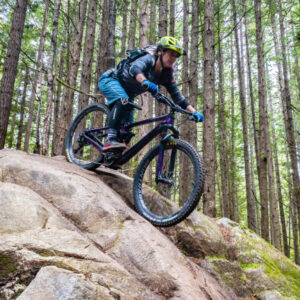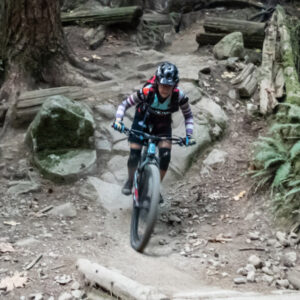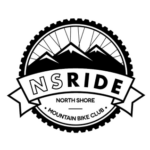NSRIDE:
North Shore Riding Society Code of Conduct
1. PURPOSE
The purpose of the NSRS Code of Conduct is to describe the type of behaviour which the NSRS is seeking to promote and encourage its members and supporters to adopt.
2. GOVERNANCE
The code shall be known as NSRS Code of Conduct. The Code shall govern the conduct of all persons associated the NSRS Club. In particular, it shall apply to:
- Persons acting for and on behalf of NSRS.
- Persons participating in NSRS organized events.
3. KEY PRINCIPLES
- NSRS wishes to operate in an environment where people show respect for others, their property and the environment. Respect is defined as consideration for another person’s physical, emotional well-being and possessions and to ensure no damage or deprivation is caused to either.
- NSRS wishes to operate in an environment that is free from harassment. Harassment is defined as any action directed at an individual or group that creates a hostile, intimidatory or offensive environment.
- NSRS wishes to operate in a non-discriminatory environment. Respect the right, dignity and worth of every human being within the context of the activity; treat everyone equally regardless of gender, ethnic origin or religion.
- Persons to whom this Code applies acknowledge and agree to comply with the disciplinary and grievance procedures promulgated by NSRS. If any disciplinary action is taken, persons directly affected shall be given the opportunity to participate in those proceedings and the right to appeal against any decision against them.
4. KEY ELEMENTS
All persons who are bound by this code shall:
- Act in a manner which is compatible with the interests of NSRS.
- Accord people involved in cycling with the appropriate courtesy, respect and regard for their rights and obligations.
- Treat people’s property with respect and due consideration of its value.
5. CLUB GUIDELINES
Make sure your bike is in good condition.
Having two wheels does not make a mountain bike. Not all bikes can go everywhere. If you have a road bike, you can’t take it off-road, safely. It was never designed for that usage. Your bike needs to be in good working order if you want to ride off-road trails for several hours. Being ill-prepared will inconvenience yourself, others around you and will likely affect the enjoyment of the ride. Use common sense. Have your bike regularly serviced by a qualified mechanic.
- Any bicycle that can be powered without pedalling is not permitted.
- Always wear an appropriate bicycle helmet for the type of riding you do. NO HELMET = NO RIDE.
- Dogs are not permitted on club rides.
- Be prepared. Bring enough water, food, tools and adequate clothing.
Club rides longer than one hour require you to think ahead. Water and/or sports drinks are a must for any ride, long or short. Bring suitable clothing for the trail location (e.g. high alpine vs. valley forest) and weather forecast. Be responsible for yourself.
- Maintain control.
Ride within your abilities. Losing control of your bike significantly increases your risk of injury, the risk of injuring others and your impact on the environment.
- Ride, don’t slide. Avoid skidding.
Skidding reduces your control and damages the trail. Skidding to a stop is bad trail etiquette, startles fellow riders and prematurely wears out your tires.
- Ride to the conditions.
Your ability to control your bike will change in different trail and weather conditions. Ride within the conditions to protect yourself, others and the environment. .
- Keep right where possible.
This is consistent with traffic regulations and can minimize the risk of collision.
- Pass with care and give plenty of warning.
Always announce your intention to pass another rider. Leave the maximum amount of room to ensure you will be able to pass safely. A friendly greeting is considerate and effective; don’t startle other trail users. Show respect when passing by slowing to reasonable pace or even stopping. Anticipate other trail users around corners or in blind spots. Yielding means slow down, establish communication, be prepared to stop if necessary and then pass safely. Unless you are participating in a registered race, passing someone quickly and at close range dangerous, and inconsiderate to other trail users.
- Be courteous and respect other trail users.
Being polite and courteous to others using the trail, especially non-cyclists, will improve the image and reputation of all mountain bikers.
- Minimum impact code.
Observe the minimum impact code; take only photographs and leave only tire prints. Be sensitive to the dirt beneath you. Recognize different types of soils and trail construction; practice low-impact cycling. Wet and muddy trails are more vulnerable to damage. When the trail bed is soft, consider other riding options. Be sure to pack out at least as much as you pack in.
- Ride on open trails only.
Some trails are closed permanently and seasonally for valid reasons. Respect the wishes of trail builders and trail associations who maintain the trails
- Always stay on the trail.
For your safety and for the trails. Do not widen the trails by creating a new line. This also means staying on existing trails and not creating new ones without the appropriate approval. Don’t cut switchbacks, stay on the trail.
- Avoid sensitive areas.
Avoid riding on vegetation and ecologically or culturally sensitive surfaces. Take extra care in damp and wet conditions. Respect the environment. .
- Support trail maintenance.
No trail maintenance = No trails = No riding.
- For insurance purposes and your safety, NO HELMET or NO MEMBER CARD = NO RIDE. THERE WILL BE NO EXCEPTIONS.
Transgressions of this Code of this Conduct will result in disciplinary measures to be decided upon by the Board of Directors. In extreme cases this could lead to expulsion from the club, and loss of all privileges associated with membership of the club







